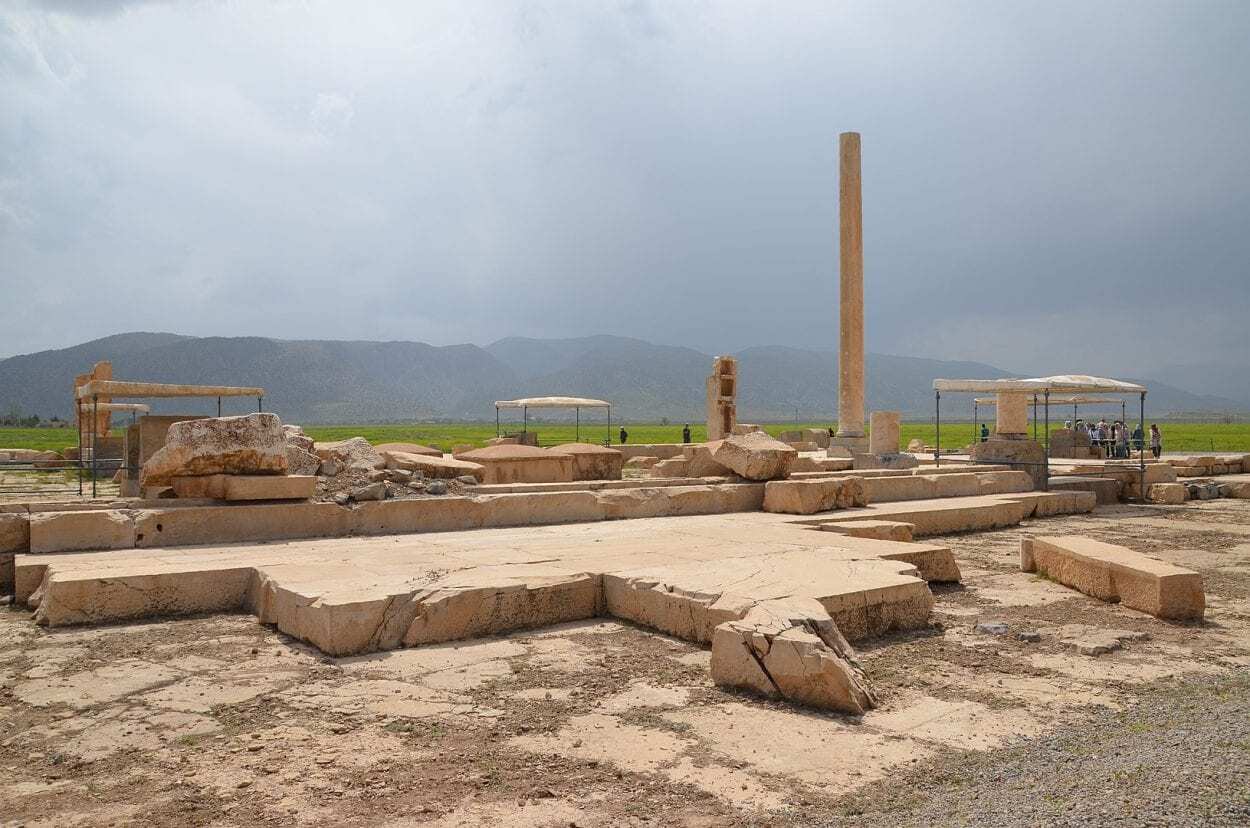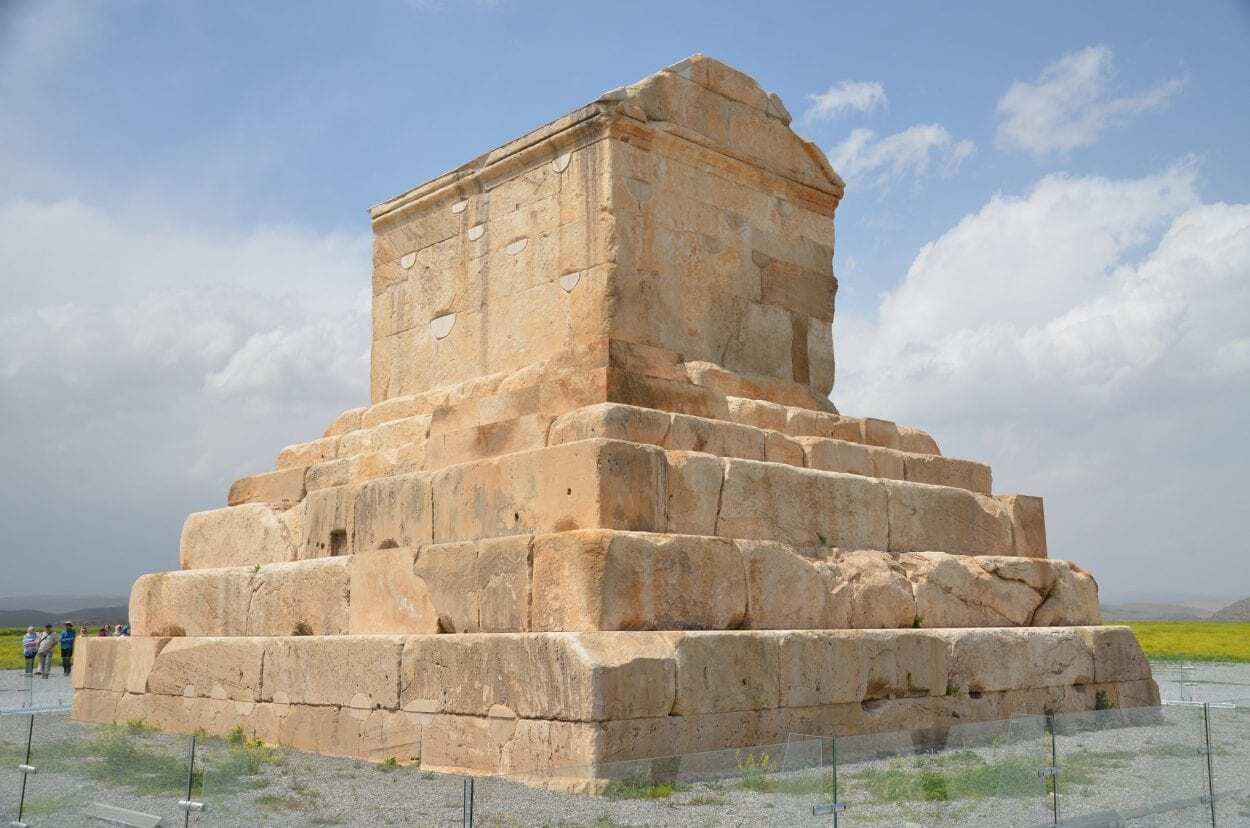Pasargadae is an ancient city and capital of the Achaemenid Empire, located in the present-day province of Fars in southwestern Iran.
The city was founded by Cyrus II, also called Cyrus the Great between 550-530 BC, who established the Achaemenid Empire, also called the First Persian Empire after Cyrus revolted against the Median Empire in 553 BC, and in 550 BC succeeded in defeating the Medes, capturing Astyages and taking the Median capital city of Ecbatana.
Cyrus established a multi-state empire, governed from four capital cities: Pasargadae, Babylon, Susa and Ecbatana, with Pasargadae serving as the first dynastic capital and historical centre.
The Empire is generally believed to be the first that respected the various cultural diversities of its inhabitants, spanning the Eastern Mediterranean, and Egypt, to the Hindus River that flows through China, India, and Pakistan.

The primary buildings of Pasargadae include royal palaces and ornate irrigated gardens, temples, an audience hall, and the tomb of Cyrus the Great (although there is no conclusive evidence identifying the tomb as that of Cyrus) that stand isolated over a wide area covering 395 acres.
The city represents the earliest manifestation of Persian or Iranian art and architecture in the written history of ancient Iran, and also the first manifestation of an imperial combined (composite, synthetical) art in the Near East recognised as ‘Achaemenid art’.
Overlooking the city is a citadel projecting from a low, conical hill called the fortress of Toll-e Takht (“Solomon’s Throne”), which may have originally been constructed as a fortified plinth to hold additional palaces and temples during the Achaemenid period.

With the construction of Persepolis by King Darius I as a new capital, Pasargadae was eclipsed in grandeur but continued to be a ceremonial centre where the inauguration of the dynastic kings took place until the empire was conquered by Alexander the Great of Macedonia in 330 BC.
In later centuries, Tall-e Takht continued to be used as a fort, while the palaces and lower city was abandoned and robbed of stone.
Header Image Credit : Carole Raddato – CC BY-SA 2.0





